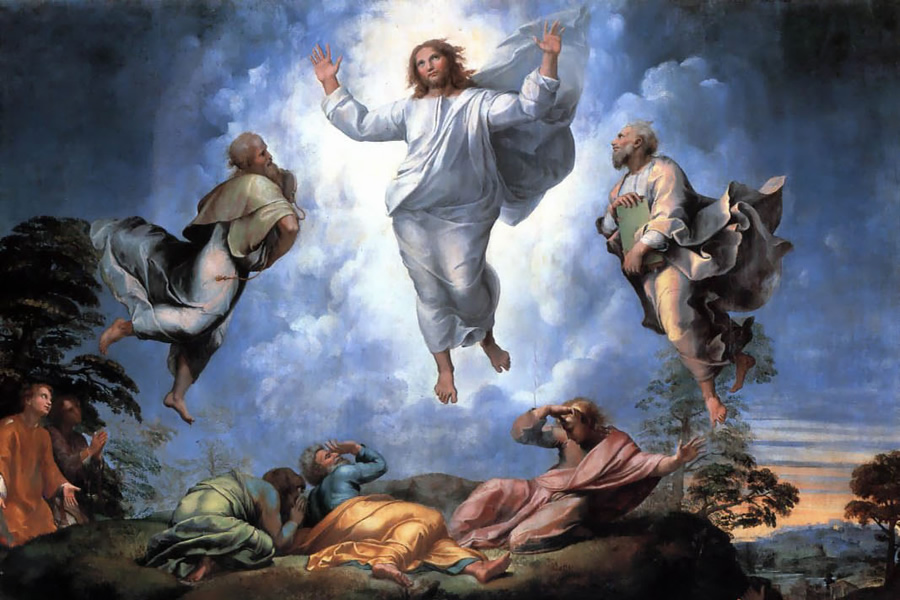
The Feast of the Transfiguration
by Larry Fraher, Ph.D | 08/03/2023 | Images of FaithOnce every few years, the Church hears the gospel of the Transfiguration twice on different Sundays. Every year we hear it on the Second Sunday of Lent; and when the Feast of the Transfiguration (August 6) falls on a Sunday, it takes precedence over the regular Sunday readings.
Raphael’s image of the Transfiguration is one of the most popular paintings of this gospel. In it, the great master presents viewers with real-life questions about what one chooses to emphasize in life. The image was commissioned by Cardinal Giulio de Medici (who would become Pope Clement VII) as an altarpiece for his home chapel in late 1516 or early 1517.
The painting depicts two stories presented in succession in the Gospels of Matthew, Mark and Luke. The first is the Transfiguration of Jesus. This pinnacle moment in the life of Christ is immediately followed by the cure of a possessed boy, the father of whom had previously requested a cure from Jesus’ disciples. The cure did not happen because of the lack of faith of the disciples and the people (see Mt 17:14- 21).
This image portrays both stories. First, in the upper half, is the glory the transfiguration: Christ, the central figure, appears to be floating and is illuminated by a heavenly light. To either side are Moses on the right and Elijah on the left. Below the vision are Peter, James and John, shielding their eyes. The two figures mid-left, on the level of the Transfiguration, are the patron saints of the Medici family.
(1) The portrayal of the second story is contained in the lower half of the painting. We see the first attempt of the father of the possessed boy to have his son cured by the disciples. The image presents one of confusion, nearing chaos. On one side the disciples, unable to cure the boy, are depicted with varied responses to their inability to effect a cure. On the other, the family of the boy begs and pleads for his cure. In the lower center-right of this portion of the image is a kneeling woman, posed as a temptress, pointing to the boy.
A visual competition emerges and interrogates the viewer, asking, “Who or what is the source of your power?” In the disciples’ efforts, presented here as distracted by multiple sources of influence among them, they are unable to muster the level of faith needed to offer a cure.
The gospel foreshadows this, as even Peter falls prey, failing to focus on the faith, becoming more worried about building monuments (three tents) than about engaging the person who has just been transfigured, Jesus Christ.
Raphael’s masterpiece offers us a deep challenge toward lived discipleship. As we reflect on this Feast of the Transfiguration of the Lord, let us answer the questions posed: Am I willing to make Jesus Christ become the source of my focus and power? How do I allow the day-to-day activities, events and temptations of life distract me on my faith journey? Do I allow these distractions to prevent me from an in-depth encounter with Christ, growing my faith in Him? May His Transfiguration remind us of the call to open our hearts to the need for our own.
BACK TO LIST BACK